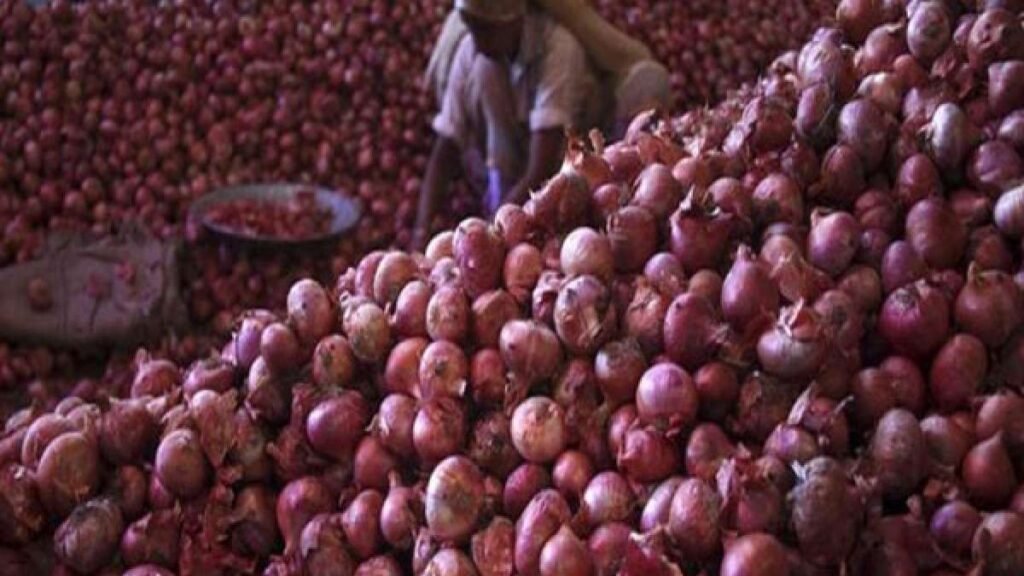According to analysts, prices for onions will remain low until the winter harvest, which has a long shelf life, begins to appear on the markets in mid-March.
According to them, there is a supply glut in the market, which has resulted in situations where farmers receive a fraction of their input costs for the produce and upset farmers shut down trading at Lasalgaon, Asia’s largest market, in Maharashtra on Monday.

As the shelf life of the late kharif harvest is too short, farmers have been panic selling as a result of the current wave of problems, according to independent agriculture sector analyst Deepak Chavan, who also urged for government involvement. Chavan claimed that this year, more farmers chose to sow the “late kharif” variety rather than the kharif variety, increasing the amount of land planted. He also estimated that increased yield of up to 20% is to blame for the current scenario.
Prolonged rains delayed sowing and many farmers opted for the ‘late kharif’ variety. They also saw a glimmer of hope in elevated onion prices in February over the last three years and timed their crop accordingly, he said. Shivaji Awate, a grower from Manchar in Pune district, said late kharif harvest ideally needs to be sold by the farmer within eight days of harvesting as against the ‘rabi’ harvest which has a shelf life of more than six months.
This year, the rise in temperatures in February has meant that the same period for ‘late kharif’ has dropped to three days as well and there is wastage of produce, leading to the panic selling at rates lower than Rs 500 per quintal which is not even covering half of the input costs, he said. Chavan said the prices will stay depressed till mid-March till the rabi arrivals begin, and it will be only with the long shelf life arrivals that traders will hold on to higher prices for the commodity.
He advocated for utilisation of the specially-created price stability fund and also direct cash transfers to the two lakh-odd farmers who he estimates have been impacted by the depressed prices. The intervention from the government, which can also include an early entry in the spot markets by agencies like Nafed to pick up over a lakh tonne of onion, can help assuage frayed nerves, Chavan said. Awate made it clear that if the government does not help it will have political ramifications as well, reminding that the general elections in 2024 is not far off.
Changdev Holkar, a grower from Nashik district’s Lasalgaon, said the government should also consider a 50 per cent subsidy in the transport costs and look at ways to encourage exports, pointing out that onion prices in countries like the Philippines are high at present. Ajit Shah, an onion exporter who also serves as the president of the Horticulture Produce Exporters’ Association, said it is very difficult to convince the South East Asian country, which buys the crop from China, to switch to Indian onions.
He said Bangladesh was one of the biggest markets for Indian onions but the export ban over the last two years led growers in the neighbouring country to start farming their own onions, which has upped the local supply and put pressure on prices. Shah also opined that the prices will be depressed for another 15-20 days till the arrival of the rabi harvest, and said only government intervention can be of help.
It can be noted that the farmers have been pressing for a grant of Rs 1,500 per quintal for onion, and have threatened to disrupt trading if the demand is not met. Maharashtra is one of the biggest producers of onion accounting for almost 40 per cent of the overall onion produced in the country and the late kharif acreage in the last sowing season stood at 2.69 lakh hectares nationally.

